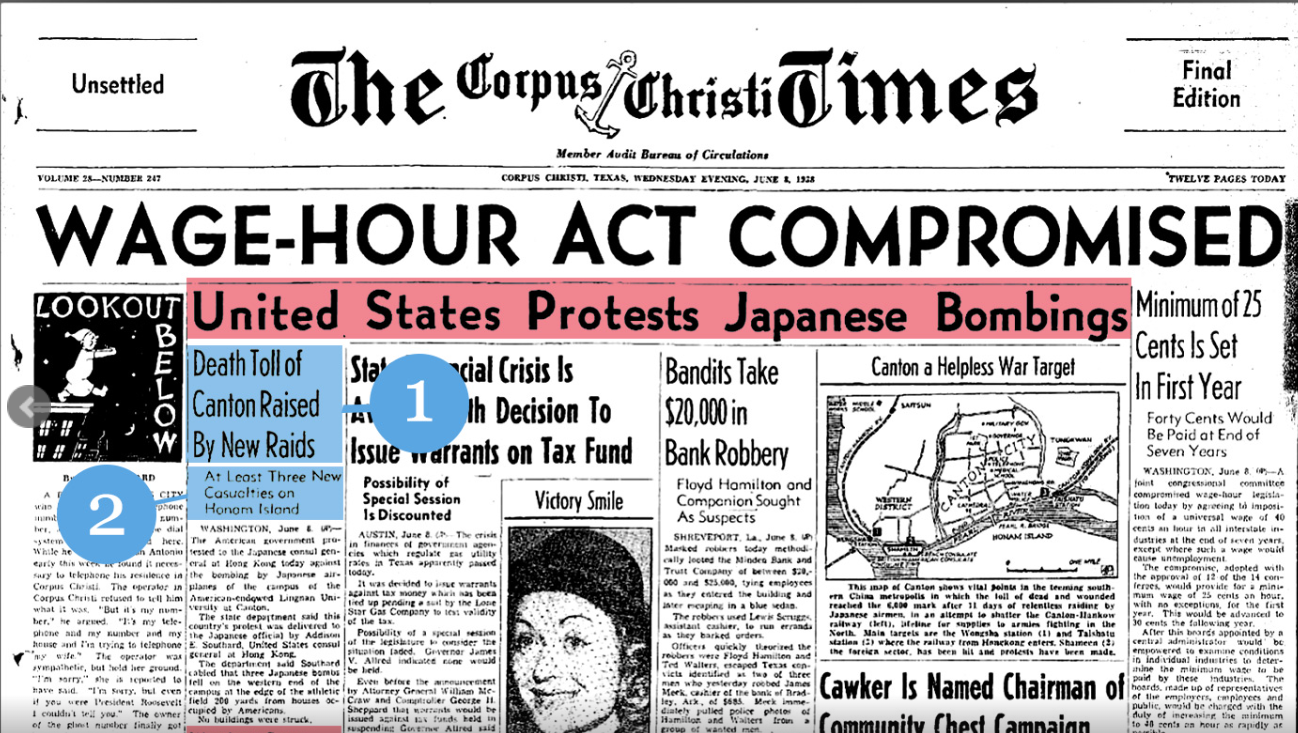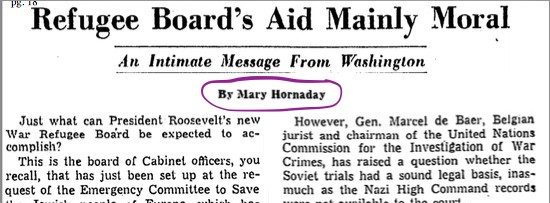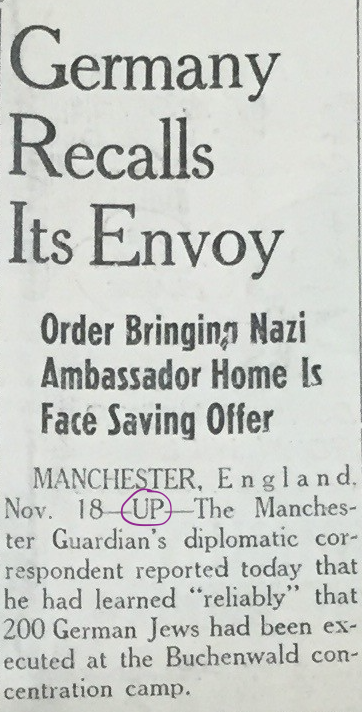 How to read old newspapers
How to read old newspapers
What Exactly Are Bylines?
If you have browsed through articles on the History Unfolded website, you may have question about the field: Author/Byline
What does Author/Byline mean? The byline gives the name of the author of the article. If there is a named author, you will usually find it directly below the article headline and sub-headline. For instance, in this Christian Scientist Monitor example below, Mary Hornaday wrote the article.

Refugee Board’s Aid Mainly Moral. The Christian Science Monitor. 1944-01-26
Authorless? Not quite.
Often, however, you will not see a named author. Why? One reason is that it was not common in the 1930s and 1940s for newspapers to identify the writer of each story. Another reason is because newspapers often subscribed to wire services to keep their readers informed about national and international events. Wire services like the Associated Press (AP), United Press (UP), or International News Service (INS) covered global stories and distributed them for newspapers to print. In some cases, a named author for one of these wire service organizations was listed. In many cases, only the wire service organization was listed.
While local paper staff did not write these stories, they still typically wrote the headlines and sub-headlines.
If you cannot find a named author, look for a wire service byline. It usually appears after the location and date (see next image.) It is common to see wire service bylines simply written as “(AP)” or “(UP)” or “(JTA).”

200 Jews Reported Executed By Nazis. The Richmond (CA) Record-Herald. 1938-11-19
Other Author/Byline Resources
If you are interested in learning more about American newspapers during the time period, check out “How Americans Got their News in the 1930s and 1940s” and “How to Read Newspapers from the 1930s and 1940s.”
Explore more
 How to read old newspapers
How to read old newspapers